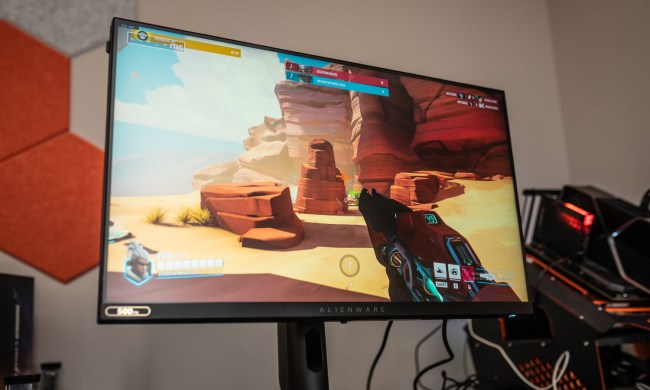Connecting a Surface Pro 8 to a monitor can improve your multitasking and make what you're working on far more clear at a larger size. You might think it's tricky, but just like the Surface Laptop 3, all it takes is to use a dongle, dock, or hub.
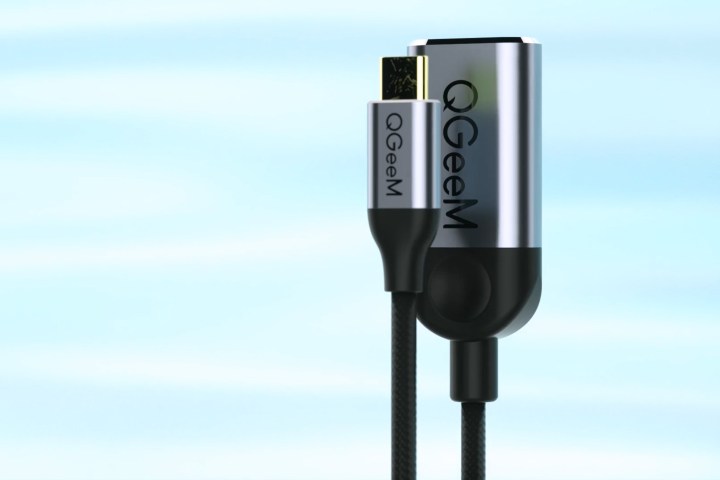
Using a USB-C to HDMI dongle or adapter
If you have a modern monitor, there's a good chance it has at least one HDMI port. Since the Surface Pro 8 doesn't have a physical HDMI port on it and instead has a USB-C port you'll have to use what's known as a dongle or adapter to convert things over to work correctly.
Step 1: Once you have a USB-C to HDMI dongle, you'll want to plug the USB-C end into your Surface Pro 8. It's the smaller end. The Surface Pro 8 has two USB-C ports on the right side, near the top, so you can plug it into either one.
Step 2: Take your physical HDMI cable and plug one end of it into the larger end of the dongle. This is the end that is not yet plugged into your Surface.
Step 3: Take the other end of your HDMI cable and plug it into the HDMI port on your monitor. The ports are usually labeled, so look for one labeled HDMI. Turn your monitor and your Surface on, and you should get a signal.
Step 4: Your Surface display should now be mirrored on the display. You can change it to Extend, or Use the Second Screen Only, by pressing the Windows Key and P on your keyboard. Then, choose one of the options. Note the More Display Settings link. Click this, and you can change the order of your display to match it.
Step 5: If you want your display in a specific orientation, just click its icon and drag it to the placement you see fit. Then, click the Apply button. There will also be additional settings for resolution, scaling, and more. Choose it as you see fit.
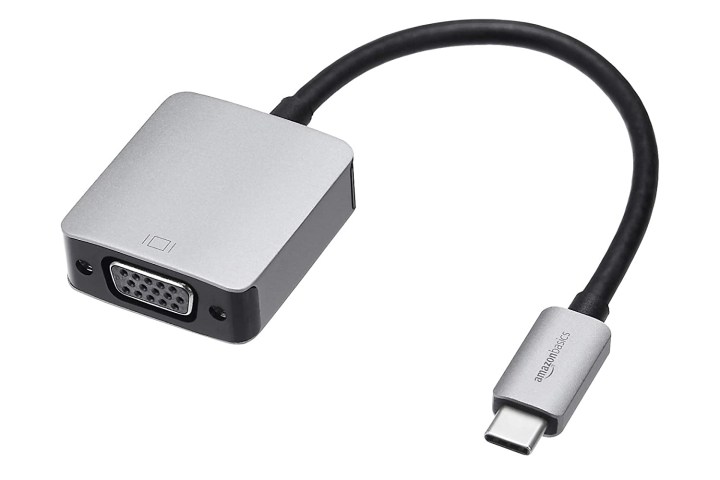
Using a USB-C to VGA dongle or adapter
If you're connecting your Surface Pro 8 to an external monitor, or a projector, that's older, you might be in need of a USB-C to VGA adapter. This VGA adapter is big (and often blue-colored) on one end, and small on the USB-C end.
Step 1: To begin, connect the USB-C end to your Surface Pro 8. Again, it's the smaller end, and you can connect to either one of the USB-C ports. on the right side of the device.
Step 2: Next, grab your VGA cable and plug it into the bigger end of the dongle or adapter. Make sure you screw and secure the VGA cable into the adapter.
Step 3: Finally, plug the other end of the VGA cable into your monitor. Look for the matching port to fit the size of the cable on your display. You'll get a signal and then you can readjust your settings as you see fit from above.
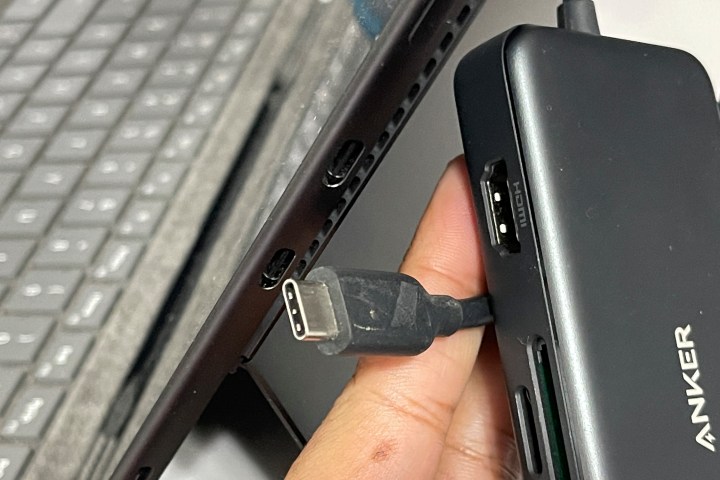
Using a USB-C dongle
Sometimes, you'll see a dongle or adapter that has both an HDMI or VGA port on it. These dongles connect up to your Surface just as we described above, but they have a spot for multiple monitor ports. Including VGA or HDMI. The steps for use are the same, just keep in the mind the cables are different.
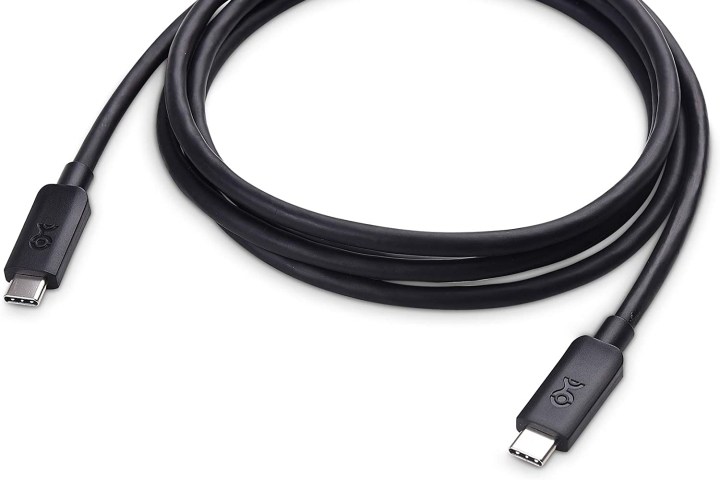
USB-C to USB-C cable, capable of power and data
If you're using a newer display, then you won't need to use a dongle at all. Your Surface Pro 8 and monitor both have USB-C ports. Just plug a USB-C cable into your Surface, and then the other end into your display. Keep in mind, though, the cable needs to support carrying both power and data. Though USB-C combines all into one, sometimes, some cables only carry power, and some only carry data. We suggest this one from Belkin.
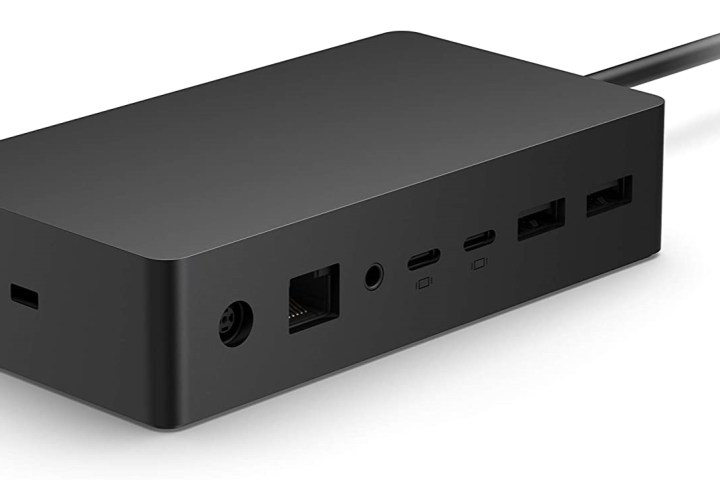
Using a Surface Dock
USB-C to HDMI or USB-C to VGA adapters are the best way to hook up your Surface to your external monitor, but Microsoft also offers it's own docking solution that can help. This is known as the Surface Dock. Surface Dock frees up the USB-C port on yout device and lets you connect to a monitor by using the Surface Connect Port instead. Simply provide power to the Surface Connect dock, plug your dock into your Surface with Surface Connnect port, and then plug the HDMI or USB-C cables into the dock, and into the monitor. The Dock also has some extra ports like USB-A, and ethernet, too.


